[English] 日本語
 Yorodumi
Yorodumi- EMDB-19755: Cryo-EM structure of amprolium-bound human SLC19A3 in inward-open... -
+ Open data
Open data
- Basic information
Basic information
| Entry |  | |||||||||
|---|---|---|---|---|---|---|---|---|---|---|
| Title | Cryo-EM structure of amprolium-bound human SLC19A3 in inward-open state | |||||||||
 Map data Map data | ||||||||||
 Sample Sample |
| |||||||||
 Keywords Keywords | SLC19A3 / vitamin transporter / thiamine transporter / MFS fold / nanobody complex / MEMBRANE PROTEIN | |||||||||
| Function / homology |  Function and homology information Function and homology informationpyridoxine transport / thiamine-containing compound metabolic process / Vitamin B1 (thiamin) metabolism / thiamine transmembrane transport / thiamine transmembrane transporter activity / thiamine transport / thiamine diphosphate biosynthetic process / transmembrane transport / membrane / plasma membrane Similarity search - Function | |||||||||
| Biological species |  Homo sapiens (human) / Homo sapiens (human) /  | |||||||||
| Method | single particle reconstruction / cryo EM / Resolution: 3.75 Å | |||||||||
 Authors Authors | Gabriel F / Loew C | |||||||||
| Funding support | European Union, 1 items
| |||||||||
 Citation Citation |  Journal: Nat Commun / Year: 2024 Journal: Nat Commun / Year: 2024Title: Structural basis of thiamine transport and drug recognition by SLC19A3. Authors: Florian Gabriel / Lea Spriestersbach / Antonia Fuhrmann / Katharina E J Jungnickel / Siavash Mostafavi / Els Pardon / Jan Steyaert / Christian Löw /   Abstract: Thiamine (vitamin B) functions as an essential coenzyme in cells. Humans and other mammals cannot synthesise this vitamin de novo and thus have to take it up from their diet. Eventually, every cell ...Thiamine (vitamin B) functions as an essential coenzyme in cells. Humans and other mammals cannot synthesise this vitamin de novo and thus have to take it up from their diet. Eventually, every cell needs to import thiamine across its plasma membrane, which is mainly mediated by the two specific thiamine transporters SLC19A2 and SLC19A3. Loss of function mutations in either of these transporters lead to detrimental, life-threatening metabolic disorders. SLC19A3 is furthermore a major site of drug interactions. Many medications, including antidepressants, antibiotics and chemotherapeutics are known to inhibit this transporter, with potentially fatal consequences for patients. Despite a thorough functional characterisation over the past two decades, the structural basis of its transport mechanism and drug interactions has remained elusive. Here, we report seven cryo-electron microscopy (cryo-EM) structures of the human thiamine transporter SLC19A3 in complex with various ligands. Conformation-specific nanobodies enable us to capture different states of SLC19A3's transport cycle, revealing the molecular details of thiamine recognition and transport. We identify seven previously unknown drug interactions of SLC19A3 and present structures of the transporter in complex with the inhibitors fedratinib, amprolium and hydroxychloroquine. These data allow us to develop an understanding of the transport mechanism and ligand recognition of SLC19A3. | |||||||||
| History |
|
- Structure visualization
Structure visualization
| Supplemental images |
|---|
- Downloads & links
Downloads & links
-EMDB archive
| Map data |  emd_19755.map.gz emd_19755.map.gz | 4.1 MB |  EMDB map data format EMDB map data format | |
|---|---|---|---|---|
| Header (meta data) |  emd-19755-v30.xml emd-19755-v30.xml emd-19755.xml emd-19755.xml | 19 KB 19 KB | Display Display |  EMDB header EMDB header |
| FSC (resolution estimation) |  emd_19755_fsc.xml emd_19755_fsc.xml | 14.4 KB | Display |  FSC data file FSC data file |
| Images |  emd_19755.png emd_19755.png | 37.2 KB | ||
| Masks |  emd_19755_msk_1.map emd_19755_msk_1.map | 216 MB |  Mask map Mask map | |
| Filedesc metadata |  emd-19755.cif.gz emd-19755.cif.gz | 6.4 KB | ||
| Others |  emd_19755_half_map_1.map.gz emd_19755_half_map_1.map.gz emd_19755_half_map_2.map.gz emd_19755_half_map_2.map.gz | 200.1 MB 200.1 MB | ||
| Archive directory |  http://ftp.pdbj.org/pub/emdb/structures/EMD-19755 http://ftp.pdbj.org/pub/emdb/structures/EMD-19755 ftp://ftp.pdbj.org/pub/emdb/structures/EMD-19755 ftp://ftp.pdbj.org/pub/emdb/structures/EMD-19755 | HTTPS FTP |
-Validation report
| Summary document |  emd_19755_validation.pdf.gz emd_19755_validation.pdf.gz | 828.8 KB | Display |  EMDB validaton report EMDB validaton report |
|---|---|---|---|---|
| Full document |  emd_19755_full_validation.pdf.gz emd_19755_full_validation.pdf.gz | 828.4 KB | Display | |
| Data in XML |  emd_19755_validation.xml.gz emd_19755_validation.xml.gz | 21.2 KB | Display | |
| Data in CIF |  emd_19755_validation.cif.gz emd_19755_validation.cif.gz | 27.7 KB | Display | |
| Arichive directory |  https://ftp.pdbj.org/pub/emdb/validation_reports/EMD-19755 https://ftp.pdbj.org/pub/emdb/validation_reports/EMD-19755 ftp://ftp.pdbj.org/pub/emdb/validation_reports/EMD-19755 ftp://ftp.pdbj.org/pub/emdb/validation_reports/EMD-19755 | HTTPS FTP |
-Related structure data
| Related structure data | 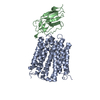 8s62MC 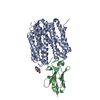 8s4uC 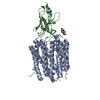 8s5uC 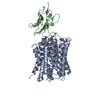 8s5wC 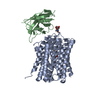 8s5zC 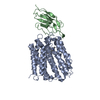 8s61C 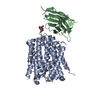 9g5kC M: atomic model generated by this map C: citing same article ( |
|---|---|
| Similar structure data | Similarity search - Function & homology  F&H Search F&H Search |
- Links
Links
| EMDB pages |  EMDB (EBI/PDBe) / EMDB (EBI/PDBe) /  EMDataResource EMDataResource |
|---|---|
| Related items in Molecule of the Month |
- Map
Map
| File |  Download / File: emd_19755.map.gz / Format: CCP4 / Size: 216 MB / Type: IMAGE STORED AS FLOATING POINT NUMBER (4 BYTES) Download / File: emd_19755.map.gz / Format: CCP4 / Size: 216 MB / Type: IMAGE STORED AS FLOATING POINT NUMBER (4 BYTES) | ||||||||||||||||||||||||||||||||||||
|---|---|---|---|---|---|---|---|---|---|---|---|---|---|---|---|---|---|---|---|---|---|---|---|---|---|---|---|---|---|---|---|---|---|---|---|---|---|
| Projections & slices | Image control
Images are generated by Spider. | ||||||||||||||||||||||||||||||||||||
| Voxel size | X=Y=Z: 0.83 Å | ||||||||||||||||||||||||||||||||||||
| Density |
| ||||||||||||||||||||||||||||||||||||
| Symmetry | Space group: 1 | ||||||||||||||||||||||||||||||||||||
| Details | EMDB XML:
|
-Supplemental data
-Mask #1
| File |  emd_19755_msk_1.map emd_19755_msk_1.map | ||||||||||||
|---|---|---|---|---|---|---|---|---|---|---|---|---|---|
| Projections & Slices |
| ||||||||||||
| Density Histograms |
-Half map: #2
| File | emd_19755_half_map_1.map | ||||||||||||
|---|---|---|---|---|---|---|---|---|---|---|---|---|---|
| Projections & Slices |
| ||||||||||||
| Density Histograms |
-Half map: #1
| File | emd_19755_half_map_2.map | ||||||||||||
|---|---|---|---|---|---|---|---|---|---|---|---|---|---|
| Projections & Slices |
| ||||||||||||
| Density Histograms |
- Sample components
Sample components
-Entire : SLC19A3:Nb3.7:amprolium
| Entire | Name: SLC19A3:Nb3.7:amprolium |
|---|---|
| Components |
|
-Supramolecule #1: SLC19A3:Nb3.7:amprolium
| Supramolecule | Name: SLC19A3:Nb3.7:amprolium / type: complex / ID: 1 / Parent: 0 / Macromolecule list: #1 |
|---|---|
| Source (natural) | Organism:  Homo sapiens (human) Homo sapiens (human) |
-Supramolecule #2: SLC19A3
| Supramolecule | Name: SLC19A3 / type: complex / ID: 2 / Parent: 1 / Macromolecule list: #2 |
|---|---|
| Source (natural) | Organism:  Homo sapiens (human) Homo sapiens (human) |
-Supramolecule #3: Nb3.7
| Supramolecule | Name: Nb3.7 / type: complex / ID: 3 / Parent: 1 / Macromolecule list: #1 |
|---|---|
| Source (natural) | Organism:  |
-Macromolecule #1: Nb3.7
| Macromolecule | Name: Nb3.7 / type: protein_or_peptide / ID: 1 / Number of copies: 1 / Enantiomer: LEVO |
|---|---|
| Source (natural) | Organism:  |
| Molecular weight | Theoretical: 15.313856 KDa |
| Recombinant expression | Organism:  |
| Sequence | String: QVQLVESGGG LVQPGDSLRL SCAASGRTFS INAMAWFRQA PGKEREYVAQ ISWTGGNTYY AESVKGRFTI SRDNAKNTVY LQMISLKPE DTAVYYCAAD SGGIRLGASR WNYWGQGTQV TVSSGRASSS SHHHHHHEPE A |
-Macromolecule #2: Thiamine transporter 2
| Macromolecule | Name: Thiamine transporter 2 / type: protein_or_peptide / ID: 2 / Number of copies: 1 / Enantiomer: LEVO |
|---|---|
| Source (natural) | Organism:  Homo sapiens (human) Homo sapiens (human) |
| Molecular weight | Theoretical: 59.715664 KDa |
| Recombinant expression | Organism:  Homo sapiens (human) Homo sapiens (human) |
| Sequence | String: MDCYRTSLSS SWIYPTVILC LFGFFSMMRP SEPFLIPYLS GPDKQLTSAE ITNEIFPVWT YSYLVLLLPV FVLTDYVRYK PVIILQGIS FIITWLLLLF GQGVKTMQVV EFFYGMVTAA EVAYYAYIYS VVSPEHYQRV SGYCRSVTLA AYTAGSVLAQ L LVSLAQMS ...String: MDCYRTSLSS SWIYPTVILC LFGFFSMMRP SEPFLIPYLS GPDKQLTSAE ITNEIFPVWT YSYLVLLLPV FVLTDYVRYK PVIILQGIS FIITWLLLLF GQGVKTMQVV EFFYGMVTAA EVAYYAYIYS VVSPEHYQRV SGYCRSVTLA AYTAGSVLAQ L LVSLAQMS YFYLNVISLA SVSVAFLFSL FLPMPKKSMF FHAKPSREIK KSSSVNPVLE ETHEGEAPGC EEQKPTSEIL ST SGKLNKG QLNSLKPSNV TVDVFVQWFQ DLKECYSSKR LFYWSLWWAF ATAGFNQVLN YVQILWDYKA PSQDSSIYNG AVE AIATFG GAVAAFAVGY VKVNWDLLGE LALVVFSVVN AGSLFLMHYT ANIWACYAGY LIFKSSYMLL ITIAVFQIAV NLNV ERYAL VFGINTFIAL VIQTIMTVIV VDQRGLNLPV SIQFLVYGSY FAVIAGIFLM RSMYITYSTK SQKDVQSPAP SENPD VSHP EEESNIIMST KLLEVLFQGP SSGWSHPQFE KGGGSGGGSG GSAWSHPQFE K UniProtKB: Thiamine transporter 2 |
-Macromolecule #3: Amprolium
| Macromolecule | Name: Amprolium / type: ligand / ID: 3 / Number of copies: 1 / Formula: A1H5C |
|---|---|
| Molecular weight | Theoretical: 243.327 Da |
-Experimental details
-Structure determination
| Method | cryo EM |
|---|---|
 Processing Processing | single particle reconstruction |
| Aggregation state | particle |
- Sample preparation
Sample preparation
| Buffer | pH: 7.4 Component:
| ||||||||||||||||||
|---|---|---|---|---|---|---|---|---|---|---|---|---|---|---|---|---|---|---|---|
| Vitrification | Cryogen name: ETHANE-PROPANE / Chamber humidity: 100 % / Chamber temperature: 283.15 K / Instrument: FEI VITROBOT MARK IV |
- Electron microscopy
Electron microscopy
| Microscope | FEI TITAN KRIOS |
|---|---|
| Specialist optics | Energy filter - Name: GIF Bioquantum / Energy filter - Slit width: 20 eV |
| Image recording | Film or detector model: GATAN K3 BIOQUANTUM (6k x 4k) / Number grids imaged: 1 / Number real images: 5794 / Average exposure time: 3.0 sec. / Average electron dose: 46.0 e/Å2 |
| Electron beam | Acceleration voltage: 300 kV / Electron source:  FIELD EMISSION GUN FIELD EMISSION GUN |
| Electron optics | C2 aperture diameter: 70.0 µm / Illumination mode: SPOT SCAN / Imaging mode: BRIGHT FIELD / Cs: 2.7 mm / Nominal defocus max: 1.6 µm / Nominal defocus min: 0.8 µm / Nominal magnification: 105000 |
| Sample stage | Cooling holder cryogen: NITROGEN |
| Experimental equipment |  Model: Titan Krios / Image courtesy: FEI Company |
+ Image processing
Image processing
-Atomic model buiding 1
| Initial model | Chain - Source name: AlphaFold / Chain - Initial model type: in silico model |
|---|---|
| Refinement | Space: REAL / Protocol: AB INITIO MODEL |
| Output model |  PDB-8s62: |
 Movie
Movie Controller
Controller












 Z (Sec.)
Z (Sec.) Y (Row.)
Y (Row.) X (Col.)
X (Col.)













































